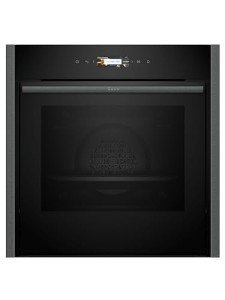Self Cleaning Oven Efficiency: A Simple Definition
The Efficiency of Self-Cleaning Ovens: A Comprehensive Overview
When it comes to maintaining kitchen devices, couple of innovations have actually substantially transformed the cleaning process as much as self-cleaning ovens. Their capability to facilitate a nearly hands-free cleaning experience has made them a popular choice amongst modern-day homeowners. Self Cleaning Oven Innovations explores the efficiency of self-cleaning ovens, checking out how they work, their benefits, disadvantages, and tips for use.
Understanding Self-Cleaning Ovens
Self-cleaning ovens use high temperatures to burn off food residues, grease, and gunk, turning them into ash that can be easily wiped away. Normally, there are 3 primary types of self-cleaning methods employed in ovens:
Pyrolytic Cleaning: This is the most typical self-cleaning method where the temperature is raised to around 900 ° F(482 ° C). The high heat incinerates food particles, leaving just a little amount of ash.
Steam Cleaning: This technique utilizes steam to soften food residues, making them much easier to clean away. The process normally takes less time and operates at lower temperatures compared to pyrolytic cleaning.
Catalytic Cleaning: This technology includes special panels coated with a permeable substance that soaks up spills and splatters during cooking. While not a standard self-cleaning approach, catalytic panels can be wiped down quickly after cooking.
Efficiency Analysis
The efficiency of self-cleaning ovens can be evaluated based on several aspects, consisting of energy consumption, time cost savings, cleaning effectiveness, and safety.
Factor
Pyrolytic Cleaning
Steam Cleaning
Catalytic Cleaning
Temperature
Approximately 900 ° F(
482 ° C)Approximately 212 ° F(
100 ° C)Varies (heat throughout cooking)
Cleaning Time
2 to 4 hours
30 minutes to 1 hour
Continuous throughout cooking
Energy Consumption
High (due to high temperature level)
Moderate
Low (throughout regular use)
Effectiveness
Very efficient
Reasonably efficient
Effective for light spills
Safety
Requires cool-down time
Generally safe
Safe when panels are operating
Benefits of Self-Cleaning Ovens
Convenience: The hands-free element of self-cleaning ovens is perhaps their greatest appeal. It conserves time and effort compared to traditional cleaning techniques.
Deep Cleaning: The pyrolytic method, in particular, is exceptional for removing persistent baked-on residues that would otherwise require hours of scrubbing.
Decrease in Cleaning Products: Homeowners typically discover they require fewer harsh chemical cleaners, adding to a much healthier kitchen area environment.
Increased Lifespan: A clean oven can possibly last longer given that the high temperatures help in reducing the accumulation of hazardous residues.
Downsides of Self-Cleaning Ovens
High Energy Use: The pyrolytic cleaning process can use a significant amount of energy, which may lead to increased utility bills, particularly if done regularly.
Heat Generation: During the self-cleaning process, the oven can become exceptionally hot, causing possible safety issues if there are children or pets in the home.
Emissions: Some issues have actually been raised about the emissions brought on by burning residues, which might adversely impact air quality in smaller cooking areas.
Endure Components: Regular use of high-temperature cleaning cycles may trigger use on specific oven components gradually.
Tips for Optimal Use of Self-Cleaning Ovens
To maximize the efficiency and usefulness of a self-cleaning oven, house owners should think about the following tips:
Refer to the Manual: Always consult the user manual for particular cleaning instructions and guidance tailored to the model you own.
Clean Regularly: Although self-cleaning ovens are developed to make life much easier, routine use of the self-cleaning function can prevent accumulation and decrease the variety of cycles required.
Remove Accessories: Always remove racks, thermometers, and any other devices before initiating a self-cleaning cycle to prevent damage.
Make Sure Good Ventilation: Because high temperatures and potential emissions are involved, make sure appropriate kitchen ventilation throughout the self-cleaning process.
Keep a Watchful Eye: While ovens are normally safe, it's an excellent practice to keep track of the self-cleaning process, especially during the first couple of usages.
Frequently Asked Questions About Self-Cleaning Ovens
1. How frequently should I utilize the self-cleaning function on my oven?
It is typically suggested to utilize the self-cleaning feature every three to 6 months, depending upon use. More frequent usage may be required for those who bake or roast routinely.
2. Are self-cleaning ovens safe for family pets and kids?
While self-cleaning ovens are safe, the process creates considerable heat. Self Cleaning Oven Reliability to keep kids and animals away from the kitchen during the self-cleaning cycle to avoid mishaps.
3. Can I use routine oven cleaners together with self-cleaning features?
No, utilizing regular oven cleaners within a self-cleaning oven is dissuaded as it can harm the oven's interior and cause dangerous fumes.
4. Is steam cleaning as reliable as pyrolytic cleaning?
Steam cleaning is typically less efficient for hard, burnt-on residues compared to pyrolytic cleaning however is a much faster and much safer alternative for light spills.
Self-cleaning ovens represent a substantial development in cooking technology, using benefit and reliable cleaning options for modern kitchens. With careful use and an understanding of both their strengths and constraints, house owners can delight in the benefits of these home appliances while maintaining a clean and effective cooking environment. As technology continues to progress, the future may bring even more innovations in the realm of kitchen cleaning efficiency.
